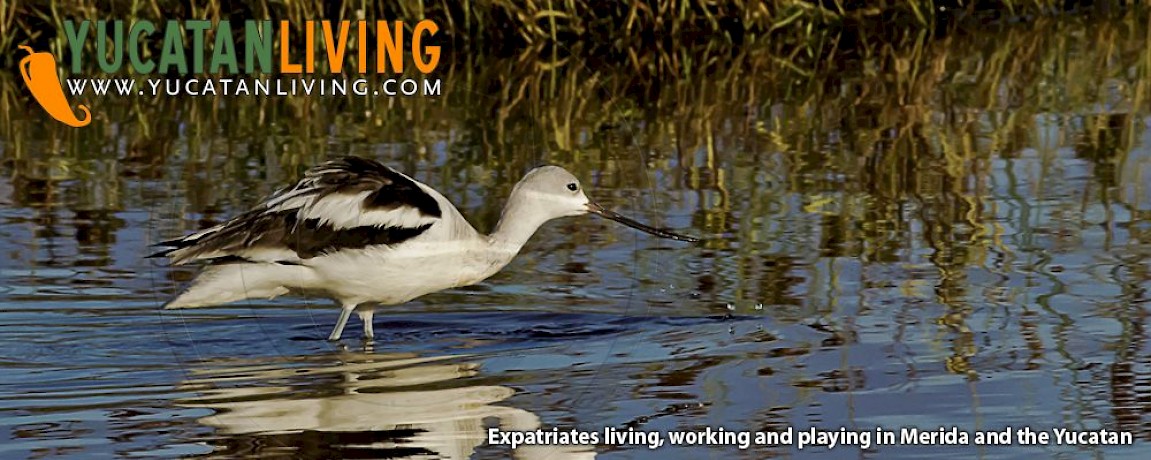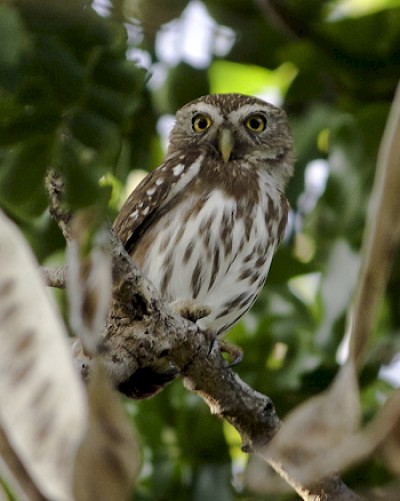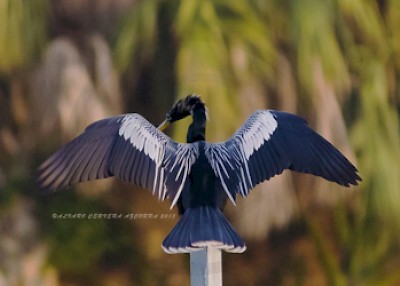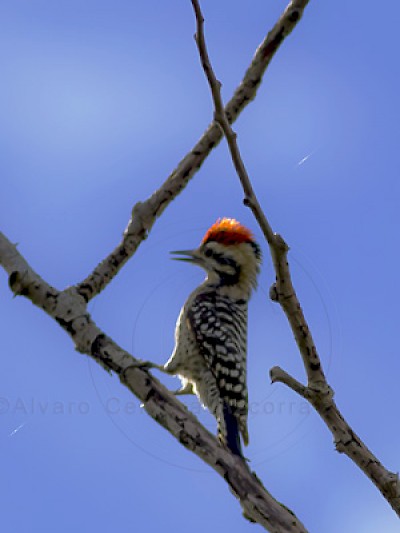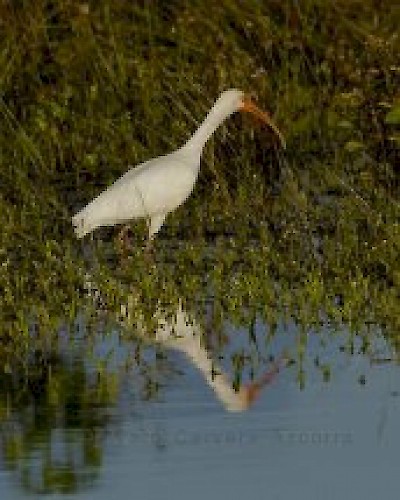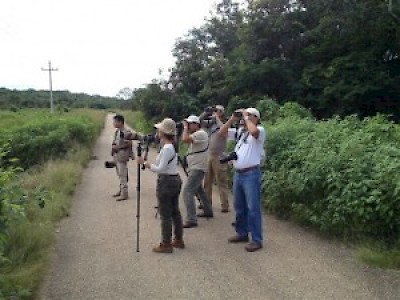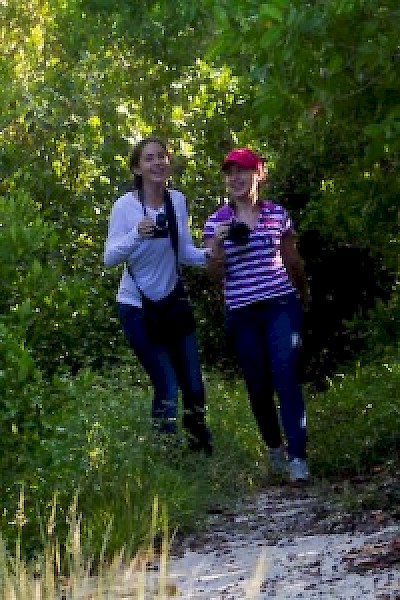Bird Photography in Yucatan
Editor's Note: The Yucatan has long been a haven for birds flying south for the winter, whether they winter here or are just passing through. Over the last few years, we have seen birding and bird photography growing in importance as both a local and a tourist activity. Our good friend, Alvaro Cervera, is an architect by trade, but in his heart, he is a bird photographer. And he has been pursuing this new venture around the Yucatan Peninsula more and more over the last few years. We asked Alvaro and his wife Mercedes to write to us about this activity, how it started and what kind of opportunities the Yucatan presents for an avid birder. Here's what they wrote.
*****
A Growing Passion
It all started in our back yard in Mérida, when Alvaro discovered a little Owl, who we called Viejita. Viejita was just a little bird sitting in the trees around our house. He seemed to like to stay in our trees and he did not mind having his photo taken. Over the next couple of months, a ritual was created and repeated. Every day, Alvaro went outside to water the garden and Viejita came a little closer. Alvaro would come inside to get his camera and the little bird would stay until Alvaro returned, posing for his photograph. Now we know that Viejita is a Ferruginous Pygmy Owl, known in the Yucatan as tecolote bajeño, or Tóaka Xnuk (TOE-ah-kah ISH-nook) in Maya.
Bird Watching Groups in Yucatan
When Alvaro showed the Viejita photos to a friend of his, the friend mentioned that there was a group of photographers, sponsored by a local non-profit called Pronatura. They were holding a photography contest that coincided with the annual Festival de Aves Toh, the Yucatan Bird Festival. Alvaro decided to find out more, and he attended a meeting, meeting and getting to know the other people in the group. Before we knew it, he was joining them in weekly or biweekly bird-watching trips around Mérida. Much to our surprise, he discovered that there are a lot of birds to see on the Yucatan Peninsula. Some of them are migratory, and others are indigenous to this area. I say "much to our surprise" because we both have grown up in Merida, and have lived here all our lives. We now have children here as well... and we had no idea!
Alvaro started taking our older children with him on these bird-watching outings, discovering that these outings were a great opportunity to spend time with the children... time that was outdoors, adventurous and were thankfully as interesting to the kids as television or video games. After all, taking photos of the birds still involves technology, still involves looking at a screen... but of course, it is also about being outdoors, nature, animals and camaraderie with other people.
A Typical Bird Photography Outing in Merida
There are two typical types of outings that Alvaro and the kids take. One is an outing where he takes our daughter, who is 16 years old, and goes out with his best friends (a couple with their daughter who is 14 years old). They plan where they are going in advance a few days before they go, and they usually go to just one site. The day before, they check cameras, batteries, memory cards, car, etc., just as a fisherman or a hunter would to prepare for a day in the Yucatan wildnerness. It doesn't matter if you go to take photographs or just to watch birds, you must take a good bird guide and light weight binoculars (6X-10X42mm are good, Alvaro uses 10X42mm). We have found it is best to dress in long pants, a short-sleeved shirt, closed comfortable shoes, and a hat... and don't forget to wear and bring insect repellent. It is pretty much always hot weather, but Alvaro always wears long sleeves because of the sun. He also takes a vacuum-insulated water bottle instead of buying water in plastic bottles. It's better for the planet, no one throws it away, and the water stays colder too.
They wake up about 5:30 AM to meet at 6 after a light breakfast. Each family takes their own car, and they caravan to the planned destination. They usually go somewhere that is within 30 minutes from the city of Merida. Since this is a photographer's outing, there is no need to arrive too early in the morning because they need good light to take photographs... early morning light is wonderful in the Yucatan. When they are on the road, they are always looking around for any bird, so they are also watching to see if the other car stops along the way. Once they arrive (around 6:30 or 7:00 AM), the daughters make one team and the adults make another one. The girls like to take their time because they also take pictures of flowers, bugs, nature, and whatever pretty thing they find along the way. The older team likes to walk, chatting in whispers but staying alert for songs and/or movements of branches. If any of them see a bird, they signal silently where the bird is perched. The first one observing the bird is the one who gets priority to take photographs of it. When the first photographer is done, the others get a chance too. It really is exciting when an unexpected bird shows up. Sometimes they find themselves spending more than an hour just observing the behavior of only one or a pair of birds. It is a peaceful and lovely way to enjoy the natural landscapes in our own state of Yucatan. We are so fortunate here, because a birdwatcher can be in a savannah, in a mangrove forest or in a jungle... and they are all just minutes away one from each other.
The group usually returns home about 11:00 AM or noon when the light gets too stark and strong for good photographs. Then it is time for a good shower and a beer (adults only, of course)! In the afternoon, they usually spend time on the computers downloading the photographs, selecting the best ones and deleting the rest. The rest of the week is for what Alvaro calls "the darkroom process". That's when he spends time with the photos, cropping and perfecting them on the computer, showing his own perspective of what Mother Nature has shared with them. Alvaro likes to share his photographs on his Facebook wall and in some other places on Facebook, like Comunidad Mexicana de Fotógrafos de la Naturaleza (The Mexican Community of Nature Photographers), as well as other nature and wildlife photography groups (see links at the end of the article).
Formal Bird Photography Outings in Yucatan
The second kind of outings are ones that are organized every month by The Yucatan Bird Club or the Festival de las Aves Toh. When they go on these outings, they wake up at about 4:30 AM because they have to meet the others at a central point. Usually the meeting place is close to the road that takes them to their first destination. At those outings, they are joined by other photographers, birds watchers and photo-birdwatchers. They go to see the birds starting at dawn, and they usually go to more than one site. Often, the activity is farther outside of Merida.
When they go with TYBC, they usually carpool to the locations. If Festival de las Aves Toh leads the outing, then they usually meet in a parking lot or street and go to one of those formal punto de encuentros you see painted on the ground or on a sign (Never knew what those were for, did you? Now you know!). At the meeting point, they meet with the official guide and he provides the vehicles for the outing (1 or 2 vans depending of the number of participants). They have to pay at the end of the tour (usually $200 pesos for each participant). For that $200 pesos, they get the transportation and there is someone to instruct them about birds, usually someone who knows well the area they are visiting. They visit archaeological zones or wetlands or mangroves or jungles. It depends on the season and the kind of birds they are looking for that day. They usually get back to the meeting point in Merida around 1:00 PM, and they make a checklist of the species they observed and/or listened to, and they share those lists.
New Opportunities for Exploring the Yucatan Peninsula
By sharing this new hobby, Alvaro and my daughter have made a lot of new friends in Merida. They also have some old friends who have joined him and the kids in this passion. We have been able to coordinate family trips to visit more far-off places too. One of those places was Chicaná in Campeche, where we not only saw many birds but also wild monkeys living free in the jungle, snakes, little foxes, and a lot of unusual and interesting insects.
We have also enjoyed visiting various cenotes in the Yucatan, such as Yodzontot on the old road to Valladolid, where we found that the community is taking care of this area, keeping it clean and providing a tour and food for visitors. Cenotes are favorite places for birds in the interior of the Yucatan Peninsula, as they provide water, shade and nesting areas. By promoting these activities, we know we are helping these communities earn an income and also helping to preserve the birds' habitats. It is unfortunate that the business of capturing birds, putting them in cages and selling them for profit is still big among these rural communities. We are hoping that with more tourists and residents coming to see and photograph birds in their natural habitats, the communities will see the potential to preserve the habitats and the birds within them. The locals make good bird watching guides, and we hope this can be a better source of income in the future.
As Alvaro's bird photography interest continues, and as the children get more and more involved, we are going to continue to travel around the Yucatan Peninsula in search of new venues to photograph more and different birds. The coast of Yucatan, Valladolid, the Mayan Ruins of Ek-Balam, Cobá in Quintana Roo, places to the east such as Rio Lagartos, San Felipe and Las Coloradas... these are all places that are homes to many different kinds of birds and are places that we hope to visit in the coming months.
Family Bird Watching and Photography
As a family, we are so pleased to discover these beautiful creatures that are in our neighborhood. We love that taking trips to see and photograph them does not require a lot of money. And we love that our entire family is able to participate in the activity, with each person able to enjoy the trips at their own level. We also think that involving our children in the love and appreciation of this land and the animals that depend upon it will assure the survival of all these wonders in the Yucatan Peninsula for the next generation.
*****
Bird watching is a growing activity in Yucatan. If you are interested in learning more, here are some resources you might like...
www.facebook.com/groups/fotonaturamx
www.facebook.com/groups/NaturePhotographyWildlifePhotography
These groups are working with local people in pueblos throughout Yucatan to educate them about the importance of preserving and respecting birds and nature. They are also training local youth as official local nature guides!
Yucatan Jay Valladolid Birding
Brown Jay Mayan Birding
And in Cancun...
Green Jay Mayan Birding
All photos in this article were taken by Alvaro Cervera.




